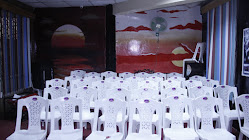THE SOMALI CULTURE
THE SOMALI CULTUREFOOD AND ECONOMY.
 Food in daily life: Milk from camels, goats, and cows is a major food for Somali herdsmen and nomadic families. Young men tending camel herds during the rainy season may drink up to ten quarts of milk a day. Aging camels may be slaughtered for their meat, especially when guests are expected for a celebration, and the fatty camel's hump is considered a delicacy. Meat, including liver, from sheep and goats also is popular, but meat is served only a few times a month, usually on special occasions. Durra (grain sorghum), honey, dates, rice, and tea are other food staples for nomads. Farmers in southern Somalia grow corn, beans, sorghum, millet, squash, and a few other vegetables and fruits. Boiled millet and rice are staples, but rice must be imported. The most popular bread is muufo, flat bread made from ground corn flour. Somalis season their food with butter and ghee, the clear liquid skimmed from melted butter. They also sweeten their food with sugar, sorghum, or honey. A holdover from Italian occupation in the south is a love for pasta and marinara sauce. Although fish is plentiful in the waters off the Somali coast, Somalis generally do not like fish. In accordance with the Muslim faith, they do not eat pork or drink alcohol. Milk, tea, coffee, and water are favorite drinks. Carbonated drinks are available in cities.
Food in daily life: Milk from camels, goats, and cows is a major food for Somali herdsmen and nomadic families. Young men tending camel herds during the rainy season may drink up to ten quarts of milk a day. Aging camels may be slaughtered for their meat, especially when guests are expected for a celebration, and the fatty camel's hump is considered a delicacy. Meat, including liver, from sheep and goats also is popular, but meat is served only a few times a month, usually on special occasions. Durra (grain sorghum), honey, dates, rice, and tea are other food staples for nomads. Farmers in southern Somalia grow corn, beans, sorghum, millet, squash, and a few other vegetables and fruits. Boiled millet and rice are staples, but rice must be imported. The most popular bread is muufo, flat bread made from ground corn flour. Somalis season their food with butter and ghee, the clear liquid skimmed from melted butter. They also sweeten their food with sugar, sorghum, or honey. A holdover from Italian occupation in the south is a love for pasta and marinara sauce. Although fish is plentiful in the waters off the Somali coast, Somalis generally do not like fish. In accordance with the Muslim faith, they do not eat pork or drink alcohol. Milk, tea, coffee, and water are favorite drinks. Carbonated drinks are available in cities.Among nomads and farmers, cooking is usually done over a wood or charcoal fire outdoors or in a communal cooking.
Subscribe to:
Post Comments
(
Atom
)

















No comments :
Post a Comment